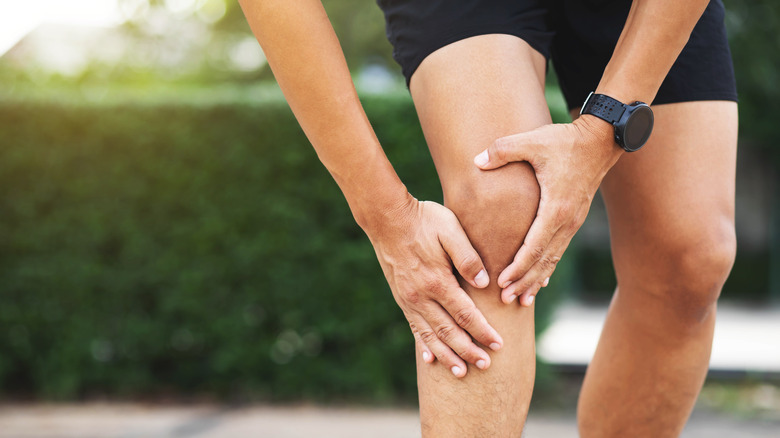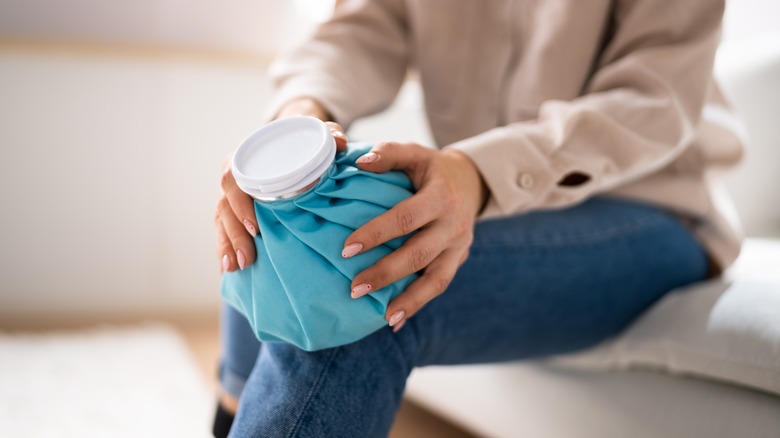The Best Exercises To Help With Inner Knee Pain
The best exercises for inner knee pain may vary depending on the cause of the pain. However, there are some exercises that can help to ease inner knee pain regardless of the cause. According to Healthline, some of these include straight leg lifts, leg presses, and mini squats. To perform a straight leg lift, sit on a chair and slowly lift one leg off of the ground, keeping it as straight as possible. Hold for a few seconds before lowering back down. For leg presses, you will need a weight machine. Position yourself on the machine with your legs shoulder-width apart. Press down on the pedal, extending your legs out in front of you. Return to the starting position and repeat.
To do mini squats, stand with your feet shoulder-width apart and your arms at your sides. Slowly lower yourself down into a squatting position, then return to standing. Other exercises that may help to ease inner knee pain include stationary or recumbent biking, swimming, walking or running on an elliptical machine, and leg extensions. As always, be sure to consult with a doctor or physical therapist before starting any new exercise routine. They can help to determine which exercises are best for you based on your individual needs.
Other ways to treat inner knee pain
Inner knee pain is a common problem that can be caused by many things, including arthritis, overuse, and injuries. If you are experiencing inner knee pain, there are some things you can do to help relieve the discomfort. According to Impact Physical Therapy, the RICE method (rest, ice, compression, and elevation) is a good place to start. Stay off your feet and apply ice or a cold pack to the affected area for fifteen minutes several times a day. This will help reduce inflammation and swelling. Gentle compression with a brace can be helpful if you need to walk on your knee. Finally, elevate your leg when possible to decrease swelling.
Performing gentle exercises or stretches can increase flexibility and range of motion in your knee. Consult with a physical therapist if you need assistance with exercises or if you are experiencing moderate to severe pain. Finally, seek medical attention if the pain does not improve after several weeks of self-treatment. Pain that does not improve or gets worse over time often means that an injury or health condition is at play and will need to be treated at the source.
Potential causes of inner knee pain
Inner knee pain is a common problem that can be caused by a variety of factors. Some of the most common causes include tendonitis or inflammation of the tendons that attach to the knee cap, jumper's knee (patellar tendonitis), and arthritis, which can damage the cartilage and bones in the knee joint (via Healthline). A medial collateral ligament (MCL) injury may also be the cause of your knee pain. This occurs when the MCL, which is a ligament that connects the thighbone to the shinbone, is stretched or torn.
Other potential causes of inner knee pain include bursitis, which is the inflammation of the fluid-filled sacs that cushion the knee joint, and sprains or strains in the ligaments around the knee (via Medical News Today). If you are experiencing inner knee pain, it is important to see a doctor or orthopedic specialist to determine the cause. In some cases, such as with tendonitis, the condition can be treated with rest, ice, and anti-inflammatory medications. However, other conditions like arthritis may require more aggressive treatment. Surgery may be necessary to repair damage to the knee joint or to realign the kneecap. The earlier you can determine a cause and begin treatment, the better.



